It’s a bold claim, but could kale really help us be healthier, while fulfilling our need for fresh greens throughout winter? Horticultural Advisor Chris Taylor certainly thinks so

 To some, the word ‘brassica’ conjures up thoughts of sulphurous, overcooked greens served up with school dinners. True, kale is a member of this family – but to my mind, it’s in a league above. Plus, I’ve found it quite hard to overcook.
To some, the word ‘brassica’ conjures up thoughts of sulphurous, overcooked greens served up with school dinners. True, kale is a member of this family – but to my mind, it’s in a league above. Plus, I’ve found it quite hard to overcook.
I also love kale’s bold aesthetic. In fact, on a recent trip to the USA, I saw them used as ornamentals in a tropical bedding scheme. Growing different colours and leaf shapes side by side definitely enhances the look.
Some of the most vibrant colours can be found in ‘Rainbow Candy Crush’, ‘Midnight Sun’ and ‘Emerald Ice’. Kale ‘Rainbow Candy Crush’ (below) was even shortlisted for RHS Plant of the Year 2021.
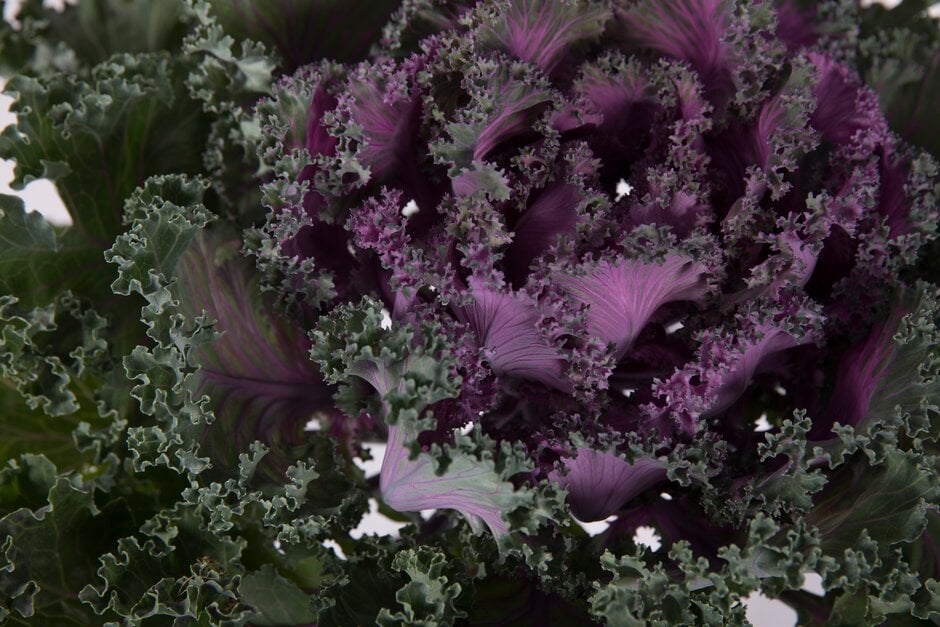
Kales suit our climate perfectly, easily shaking off the coldest winter weather and providing much needed fresh greens. They do however take up space, so allow plenty of room.
I sow kale seeds from March to June. Sow flat-leaved kales straight in the ground, and you can either do the same with curly varieties, or start them in module/cell trays. Plant out from May to July at spacings of around 45cm (18in).
For containers or windy sites choose shorter cultivars, such as ‘Dwarf Green Curled’ or ‘Black Magic’ AGM.
Kales do well on alkaline soils, since this reduces club root problems.
Perennial kales
Perennial kales are the crop that keeps on giving, potentially living up to 10 years or more before they need replacement (now that’s what I call good value!)
At RHS Garden Wisley we have a demonstration plot in the allotment area. With interesting names such as ‘Daubenton’s’, ‘Taunton Deane’ and ‘Big Green Lazy’, many perennial kales are thought to have originally been grown by cottagers and handed down through generations.
Although plants rarely produce seed, this is available to buy, or you can take or buy cuttings. These root easily in pots of compost or planted directly in the ground.
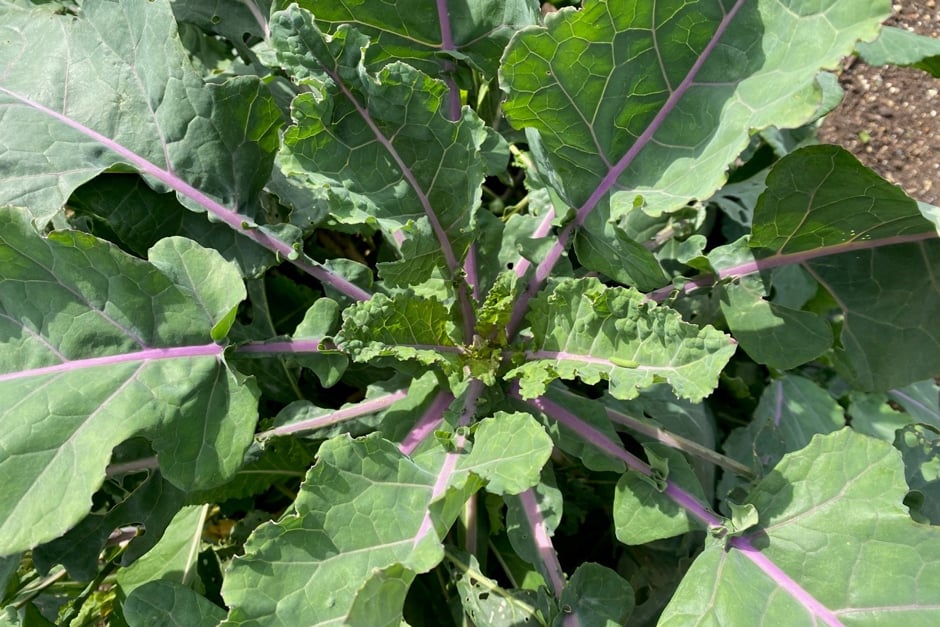 The amusingly named ‘Big Green Easy’, pictured above, alludes to perennial kales’ low-maintenance nature.
The amusingly named ‘Big Green Easy’, pictured above, alludes to perennial kales’ low-maintenance nature.
For something funky that would work well with ornamental planting, try perennial kale ‘Daubenton’s Variegata’ (below).
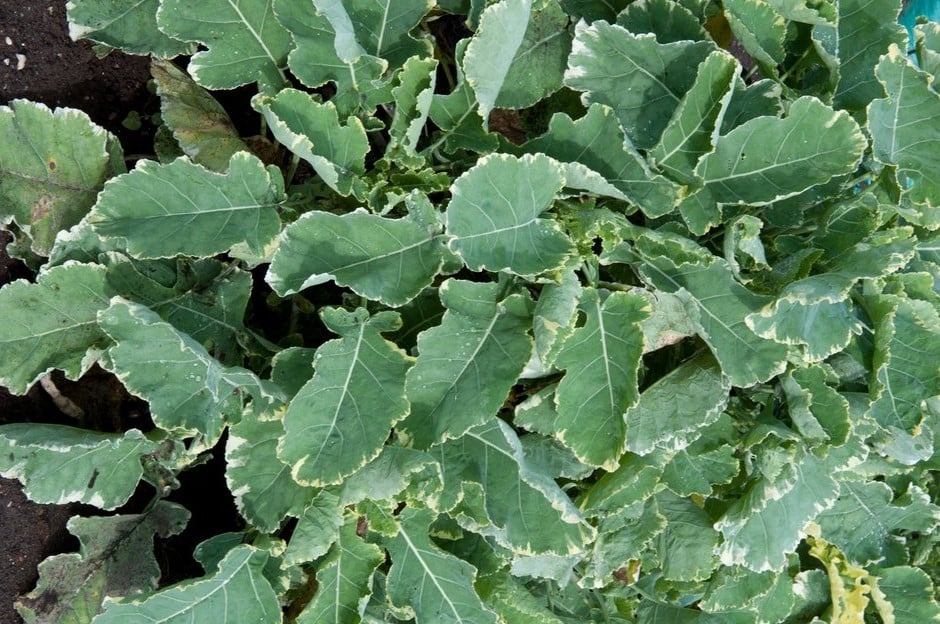 Harvesting
Harvesting
I eat kale at all stages of maturity – as small seedlings (microgreens), as salad leaves (around 10cm), or as whole tops. Removing the tops encourages sideshoots to form, but these take a while to appear. So if you want a continuous harvest, just pick the outer leaves from autumn to early spring so the top can continue growing.
Unless sold as perennial, kale is biennial, with plants bolting (producing flower buds) in their second year. I make use of these, picking buds before they open and steaming them like broccoli or frying them in tempura batter.
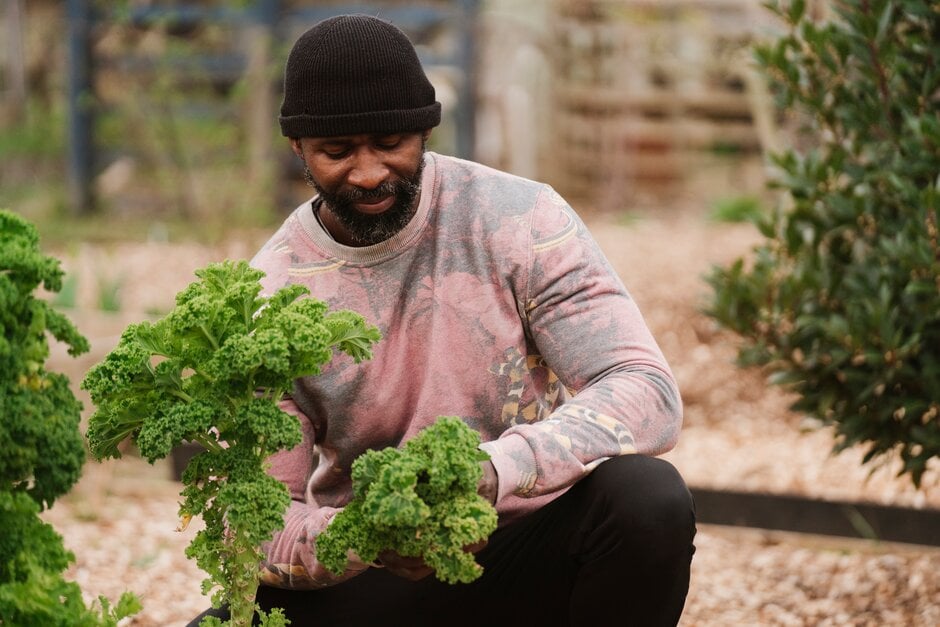
Cultivar choice
The crème-de-la-crème of kales is often considered to be ‘Nero di Toscana’. This Cavolo Nero (black kale) cultivar is dark green and delicious. Flavour is greatly improved by winter frost, which converts starches to sugars in the leaves.
Curly kales, or borecole if you’re Italian, are often slightly shorter. Their crinkly leaves mean they don’t go completely floppy when cooked. Some of the best are ‘Redbor’, ‘Kapitan’, and ‘Reflex’; all AGM (Award of Garden Merit) cultivars. Pictured below is Kale ‘Redbor’ AGM, a curly kale with striking purple leaves.
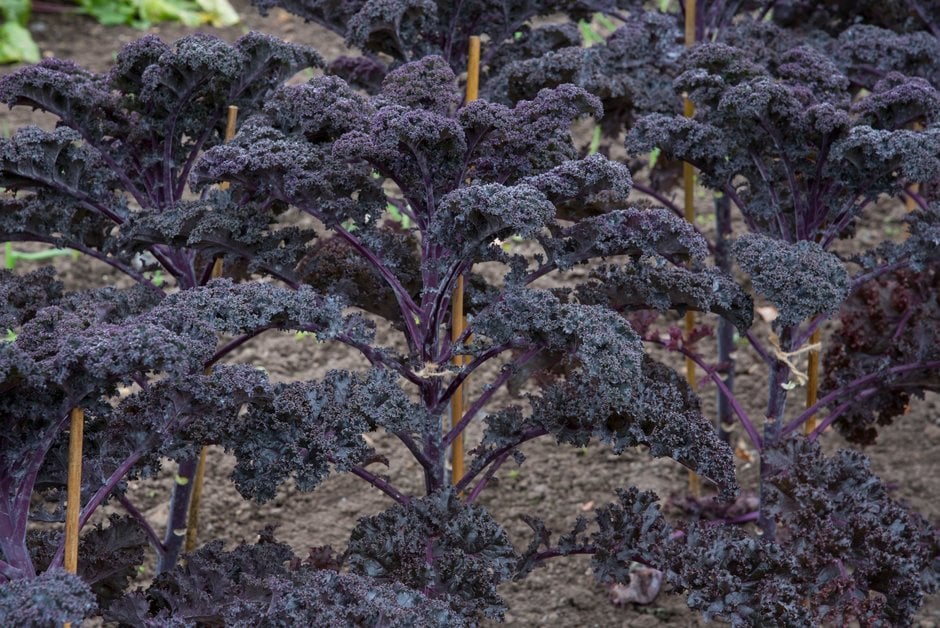
For salads, flat leaf varieties such as ‘Red Russian’ and ‘Red Ruble’ are ideal. In the image below, tender leaves of ‘Red Russian’ are harvested for salad leaves.
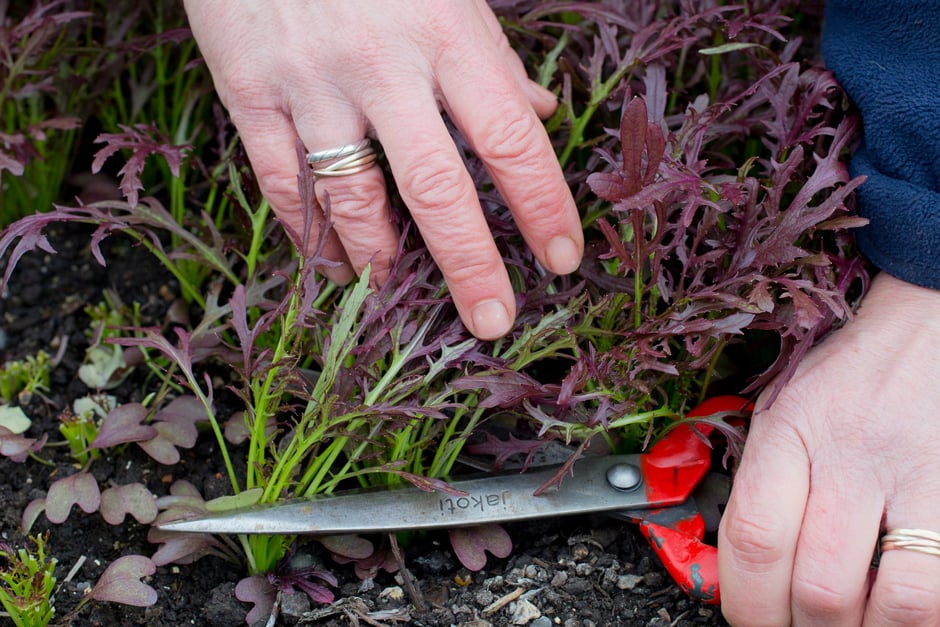
In the kitchen
Young kale leaves are perfect in salads. I sow them in a cold frame, and harvest them around ten weeks later. At this stage they have a delicious mild, sweet taste, similar to broccoli, that’s perfect for adding to salads or stir fries.
To prepare larger leaves, cut out the central vein (midrib), which can be chewy, before shredding and lightly steaming. This makes a perfect accompaniment to the traditional roast dinner, or be creative and include them in an oven bake with other veg and a cheese sauce topping.
One of my favourite treats are kale crisps. Tear leaves into equally sized pieces. Lay them on a baking tray and drizzle with olive oil (use your fingers or a pastry brush to coat them evenly). Bake for around half an hour, turning halfway. Sprinkle with sea salt to serve.
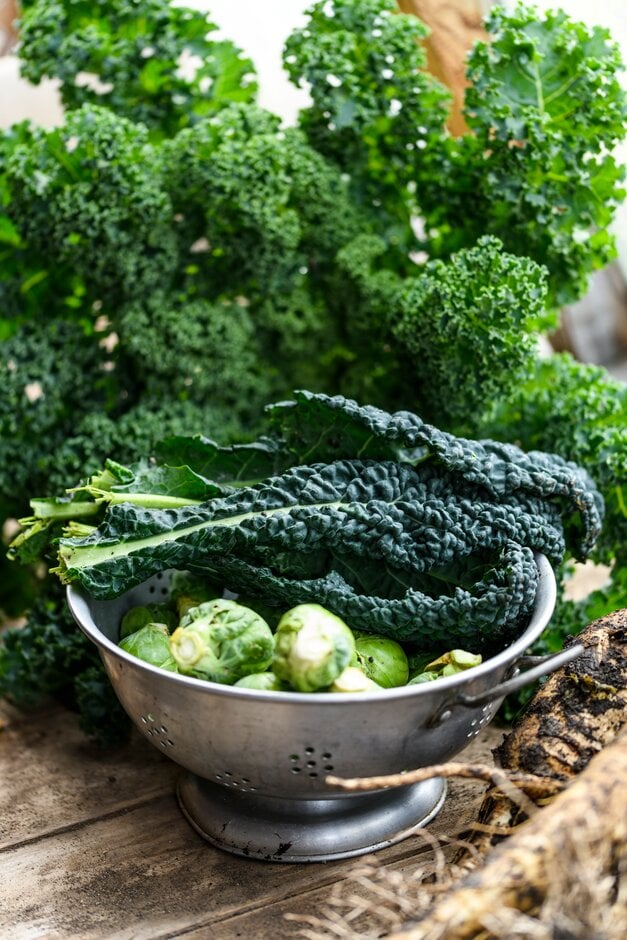 Health benefits
Health benefits
Kale isn’t just for fitness fans, who’ll often blend the leaves in smoothies. It’s a superfood for everyone.
Kale is calcium-rich – more so than milk when compared like-for-like – and packs a punch in terms of vitamins and minerals; containing vitamins A, C, E and K along with folate, magnesium, iron and potassium.
Kale has also been linked to lowering the risk of cancer, heart disease and diabetes. So feel free to feel virtuous when eating it!
Pick of the crop
 Look for the RHS Award of Garden Merit (AGM) when buying vegetable seed or small plants. You can also download the RHS lists of recommended cultivars.
Look for the RHS Award of Garden Merit (AGM) when buying vegetable seed or small plants. You can also download the RHS lists of recommended cultivars.
You may also be interested in...
About the author – Chris Taylor
I’m a Horticultural Advisor at the RHS. My job involves answering gardening questions from RHS members, whether they need to know how to prune apples or seek advice on creating a wildflower meadow. In my spare time I enjoy looking after my challenging dry shady garden, and growing many things (including veg) in pots.

